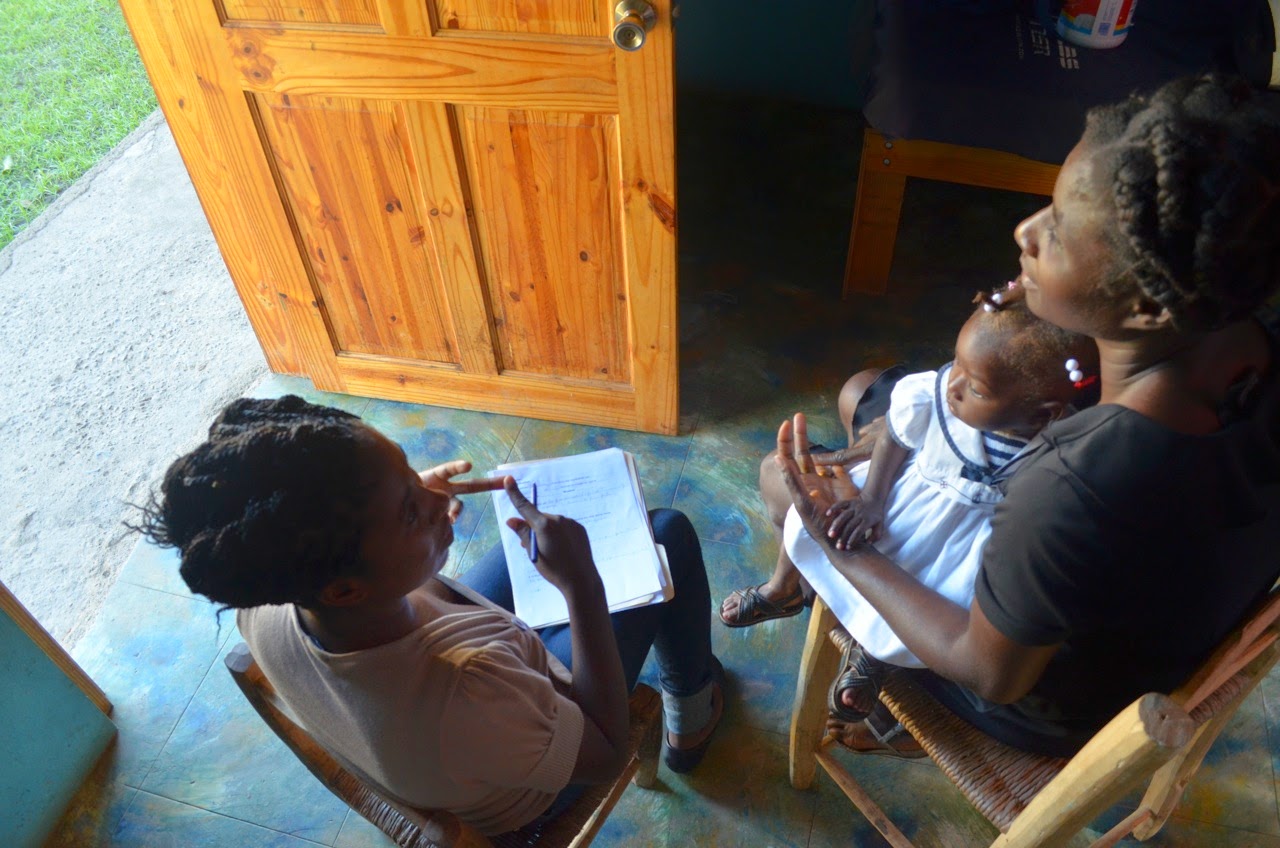On Wednesday we had something happen for the very first time in our facility.
It's something we hope we don't have to experience very often or even, not at all.
Sweet Youvenx passed away.
Youvenx came to us just about a week ago. Youvenx was extremely fragile.
We planned for him to go to the hospital the next day, and we were sure he
would be admitted. It really shocked us when he returned back to our facility
the same day. It was clear that it wouldn't be an easy case.
We were realistic about what he'd have to overcome to "make it."
On Wednesday morning I received a text at 5:05 am saying that Youvenx
passed away. I received another text from Dadou around 6:30 am saying
"Jenn, don't worry I am handling the situation." I was feeling very tired that day.
I had overslept and didn't see the text until 7:30 am in the morning.
Right away, I call Dadou. Unfortunately, I have experience when it comes to these
situations. My first response to Dadou without even thinking is "have we started
making the coffin?" and then I said "I'm on my way."
I arrived at the facility just a little past 8 am. The facility was quiet.
I'm not even sure any of the other kids made a noise all morning.
No one had to say anything at all but it was clear by how everyone
walked around the facility that everyone knew. No words needed
to be said.
I walked in Youvenx's room. He looked so sweet and innocent.
Dadou arrived 10 minutes after I did with Youvenx's mom. He had already
taken her to see some of her relatives, and to have the death certificate made.
The total cost of all paperwork was $5.25.
She told us that she wanted to have him buried in the local cemetery in the village.
So everyone went to work preparing for this funeral.
Wilner, our newly hired boss, starting building the coffin. I am afraid to even ask how
many coffins he has built in his life time.
Verdieu, our onsite prayer warrior, hovered over Youvenx's mom. He spit out prayers and comforting
words.
Kerline and Prestina, health-staff, prepared the clothes.
Ama, our wise leader, gave pep talks to the other moms and employees.
Dadou, our Director, made all the arrangements for the cemetery.
And I went to work preparing Youvenx for burial. I was in charge of bathing him, putting
his clothes on, and laying him in the coffin. It's not a role that any of my staff said I had to do but
I needed to do it.
The entire time in my head I just kept thinking about how it all seemed so surreal.
I stopped keeping track after 15, of how many sweet bodies I have seen like Youvenx.
I kept thinking how it's different back home, and how many of my friends and family
never would be involved in nor would they even know what this process looked like.
I kept thinking about my experiences in Haiti, and how sad it is that I am used to this.
I kept thinking how it's sad that I know exactly what needs to be done.
I laid Youvenx softly in the coffin and kissed his head once more. The staff joined
me in the room and started singing hymns and praying over the sweet boy.
The mom entered the room to say good-bye to her sweet boy for the very last time.
And then the sound that always gets me….. the nailing on the coffin. The closure.
And now it's time to head to the cemetery. Dadou takes the coffin on my motorcycle
and Verdieu, Ama, Wilner, Prestina, Kerline, and Youvenx's mom jump on the remaining
two motorcycles that we had at the facility.
I stayed at the facility. I already had my peace.
Everyone returned just about an hour later.
In just 2 and 1/2 hour's time this process had been completed which is also mind-blowing to me.
Dadou told me he was going to take Youvenx's mom home and talk to the family.
He already decided that Youvenx's mom would have a rendezvous the following week so
we could see how she is holding up and assess what we might be able to do on our part to make
sure she still has a chance to go through the business program. Youvenx was about 2 years old but she still has a baby girl.
The rest of the day was beautiful. My office is upstairs and it overlooks the entire compound.
I saw worship happening all over the place. The cooks were singing over the meals they were cooking.
The moms were huddled in circles singing to each other while peeling corn. Some of our other employees were huddled in the sewing room praying.
They prayed in that room for 2 hours. I couldn't stop thinking about how it was a beautiful way to usher the sweet boy onward.
I wanted to write this blog post to express my appreciation for the people I work with. It's times like these where I just can't stop thanking God for creating and then selecting these wonderful people for this work.
And since we tend to not really write about the hard stuff I wanted to take the opportunity to share it in the only way I know how, by sharing the part of it that is was beautiful, the coming together of people I love to support a family in a time of need.












































